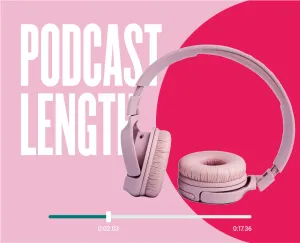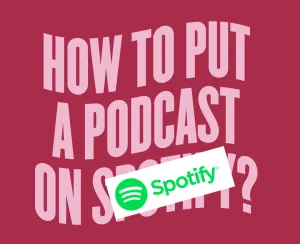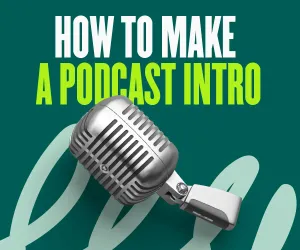Podcasting is a growing industry as anyone with much to say can join the club and become a podcaster. With 82.7 million interested listeners in the US last year, the podcast market shows no signs of slowing down and will become more prevalent in the next few years.
The American Interactive Advertising Bureau released its 2022 annual report expecting the podcasting market to generate over $2 billion in revenue this year. Although many podcasters have started their shows as a hobby, it’s not a secret that everyone is trying to turn their podcasts into a profitable business.
This article will demonstrate the practical ways to monetize your podcast and turn it into a successful business in 2022.
Can a podcast be a business?
Establishing a business mindset is the first step in the transformation process. For a podcast to become a business, it means following a different approach. Below are the business fundamentals podcasters should apply to their shows.
1) Choose a name for the podcast
As simple as it seems, choosing a name for the business is the most challenging and crucial task. Take your time selecting a proper name and choose one relevant to the podcast’s nature. Also, it’s recommended to ensure no other business exists with the same name. You can do the following to check:
- Google the name
- Research social media platforms like Twitter and Facebook
- Check the Secretary of States for business records
2) Set a financial goals
For some, the podcast is a part-time business; for others, it’s complimentary for their business or a full-time job. Deciding on the podcast goal from a financial prescriptive will help drive the business in the right direction in the future.
3) Choose a topic for the podcast
As with any business, the podcast must have a niche. Narrowing the podcast niche will make it more focused and unique. However, it’s recommended to define a not-too-limited niche to grow and support in the long term.
4) Identify the market and target audience
After choosing a niche, studying the market size and identifying the targeted audience is essential for success. Instead of putting too much effort and resources in the wrong direction, choosing the right market and audience saves time and money.
In this case, the market is the group of people who might be interested in the podcast topics and will later form a fan base to support the business. They might be college students, stay-at-home moms, retired men, or any other group.
5) Conduct competitor analysis
At this point, other podcasters will become business competitors. Unless your podcast is unique enough not to have any similar content online, you need to analyze competitors and find out more about their podcasts. While reviewing other podcasts, think of the following questions:
- What makes your podcast better than others?
- How does your podcast benefit the audience?
- What are your competitors’ weaknesses, and what makes your content superior?
- Are you going to bring something new to the table, or is it just your talent in projecting the ideas differently?
6) Build a brand identity
In the transformation process, introducing a distinctive brand identity is important. Otherwise, the audience will consider your podcast a hobby and won’t take it seriously. A strong brand image helps the podcast business to outperform others, and usually, it includes the following elements:
- Logo design, color pallet, and typography to be used in banners, website graphics, social media accounts, etc.
- Audio identity for a podcast is the unique fingerprint. So, use it wisely; choose a set of music for each part of the show, like intros, outros, and catch phrases or mottos.
- If you’re planning to create video podcasts, adding the entire identity set to the video clips enriches the brand visually
Tip
Podcastle is a one-stop-shop for broadcast storytelling trusted by over a million podcasters worldwide. It offers all-in-one editing and production tools to create professional audio and video podcasts.
7) Build a website
Building a website is the next step after setting up the brand identity. It’s essential in gaining audience cordiality, as social media accounts can’t replace a website you own. The website is the base of podcast monetization and business headquarters. It enables interacting with and engaging the audience through many methods, such as newsletters. Using the right web design software will allow you to easily build landing pages, sell products, publish surveys, launch marketing campaigns, etc.
8) Market the podcast
Like any other business, marketing is the way to let the audience know you exist. After all, you won’t make money if no one is listening. Many marketing channels are available, for example:
- Social media is a vast space, especially for a podcast business; prepare a social media strategy, and set up your marketing funnel
- Utilize paid ads campaigns through social media platforms and Google
- Partnership with podcaster; contact another podcaster to cross-promote your businesses
- Invite guests to your podcast and benefit from their channels and audience
9) Monetize the podcast
The main idea of turning the podcast into a business is to build a sustainable income! The podcast business can be profitable in many ways. Here are some of them:
Affiliate marketing
Utilize affiliate marketing to monetize your podcast by promoting products relevant to your podcast topics and motivate listeners to purchase them. Find a smart way to introduce those products without turning your podcast into a billboard. Every time products are sold through your podcast, you’ll get paid for it.
Sponsors ads
Like traditional radio commercials, sponsors would love to benefit from your podcast for advertising their brands. Those commercials can be placed before, during, or after the podcast. However, before reaching out to sponsors, you must establish a good audience base. Gather some stats and promote them on your website to trigger their interest.
Listeners Support
When a podcaster provides valuable content over time, the audience becomes supportive. After building a strong fan base, it’s an option to request funds through crowdfunding campaigns or donations to support the continuity of the podcast.
Provide Paid Premium Content
Offer in-depth information for interested followers, and utilize the opportunity to make money by delivering exclusive content. For example, if you are podcasting about the stock market, you can interview industry leaders and ask followers for payments to access those episodes.
10) Create a Growth Plan
The most troubling part of managing a podcast business is keeping it running and growing. Be prepared, and ensure setting a long-term plan:
- Prepare podcast subjects, episodes frequency, and timing schedule
- Define a marketing plan and channels and set a budget for that purpose
- Plan to communicate with companies and offer to promote their products
- Draw a brief business plan with precise financial forecasting
Time Management and Productivity
Keeping everything on time is necessary for the podcast business to earn respect. Never underestimate the importance of consistency and time commitment in building credibility. In fact, you can use online tools to schedule all business activities like recording episodes, publishing, and outreaching guests. This is fundamental if you're using your podcast business as a way of paying for college.
Utilizing web-based tools is paramount for enhancing productivity in the workflow of your Podcast and business operations.To expedite administrative processes, integrate eSignature solutions like Papersign or Adobe Sign, which expedite document signing and approval cycles, reducing time spent on paperwork.










